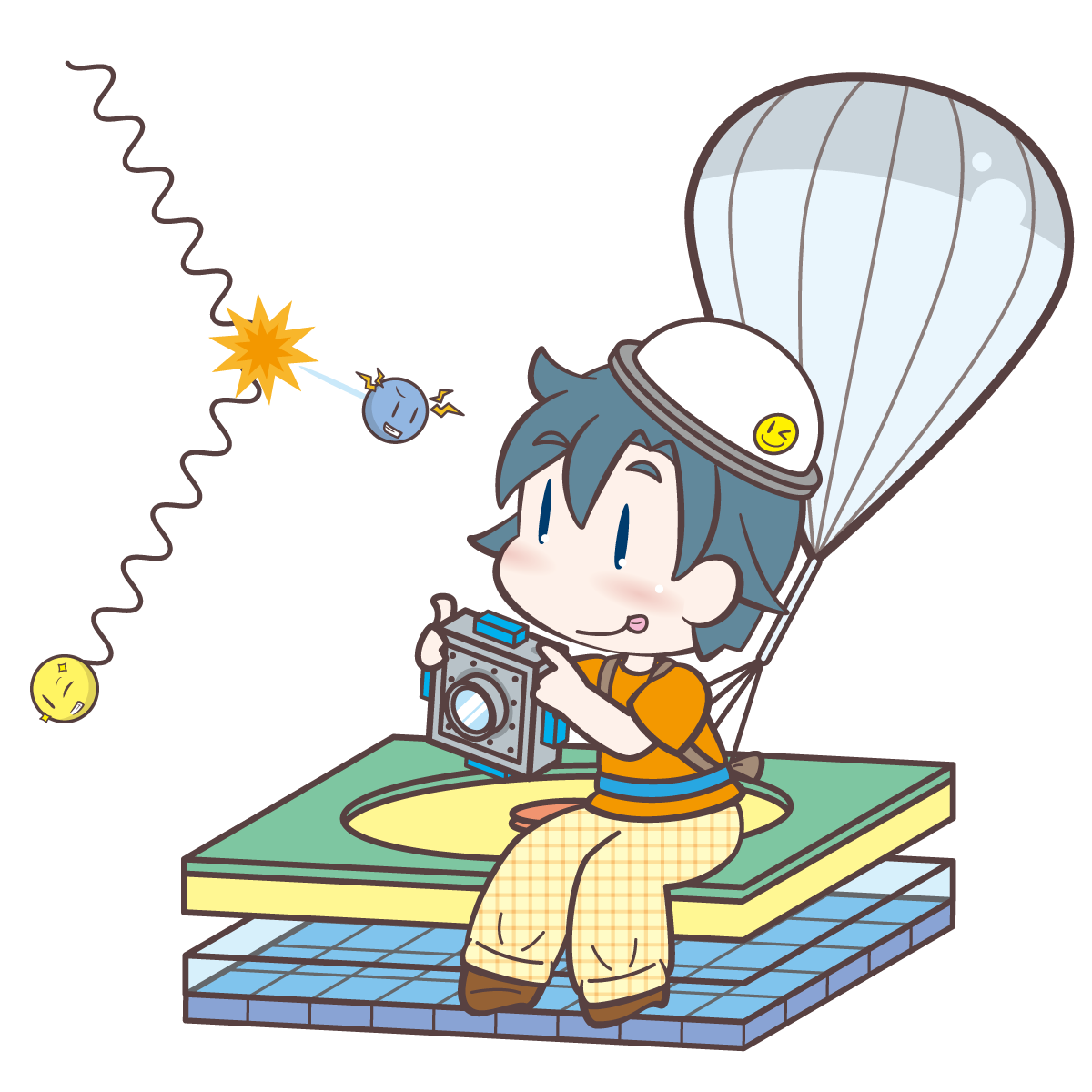SMILE-II
By the SMILE-I ETCC launched in 2006, it was verified that the background rejection tools of an ETCC are effective,
but the gamma-ray imaging of celestial objects was not confirmed yet.
In any wavelength, the imaging technology is necessary to detail study of physics in the celestial objects.
Thus we had a plan of balloon experiment SMILE-II of which aim was the verification of gamma-ray imaging using an ETCC with the observation of the bright gamma-ray sources at space condition.
SMILE-II telescope

In comparison with the electron tracker of SMILE-I,
the tracker of SMILE-II had a 20 times larger volume for a large effective area of Compton scattering.
A new readout circuit was developed with the aim of a small and low power consumption system,
and the high count rate capability of the ETCC was realized by the innovation of data acquisition system.
Furthermore, we could obtain a new parameter of an electron track (time-over-threshold: TOT) by using the new readout circuit,
so that the electron tracker of SMILE-II was able to measure more detail tracks than the Compton-recoil electron tracks detected by SMILE-I tracker.
The effective area of gamma-ray detection by SMILE-II ETCC was reached to approximately 1 cm2 for the 300 keV,
and the angular resolution measure, which is the accuracy of determination of Compton-scattering angle,
was below 6 degrees (FWHM) at the energy of 662 keV.
Until 2016, we studied the detail performance of SMILE-II ETCC on the ground
and verified the imaging ability, the background rejection power, the function of measuring polarization.


